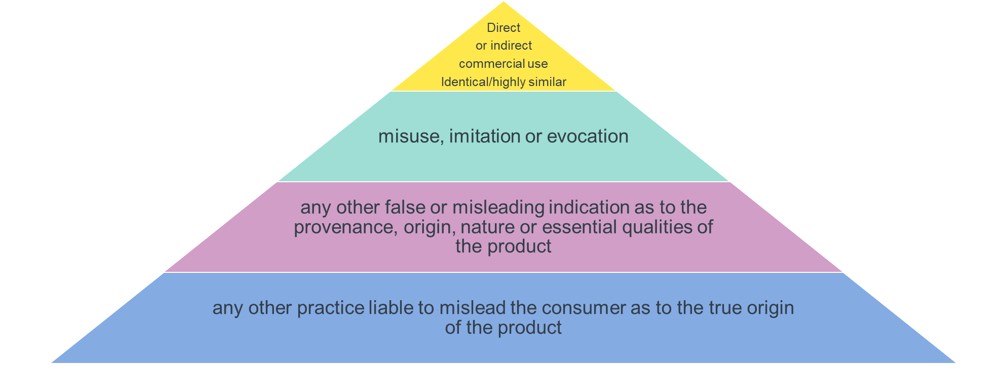GI craft and industrial products
Latest Developments
16 November 2023 – The new rules aimed at protecting geographical indications (“GI”) for craft and industrial products are now in force, in parallel to the existing rules applicable to GI for agricultural products (“Agri-GI”). EU and Non-EU producers of locally renowned non-food products, such as Bruges lace, Bohemian glass, Cuban cigars, Qinghuaci porcelain, certain jewelries made from natural stones, minerals and the likes may want to explore if they are eligible for protection under this upcoming legal regime. In fact, the EU Commission already identified in a study around 260 craft and industrial products that may be eligible for GI protection under the new regime (see here).
Summary
The Regulation will introduce harmonised rules on GI protection for craft and industrial products. The main aspects of this new GI regime will be as follows:
- Which products can be protected: the new regulation will grant protection to craft and industrial products
- that originate in a specific place, region or country;
- whose quality, reputation or other characteristics are essentially attributable to their geographical origin and
- where at least one of the production steps takes place in the defined geographical area.
- What names can be protected:
- the geographical name of the place of production of the product, or
- a name used in the course of trade or in common language to describe or to refer to the product in the defined geographical area.
- Who can apply for protection: Groups of producers of the same product and – under certain circumstances – also single producers
- Two-step registration: The registration process will involve (i) an application subject to opposition at the national level and (ii) an examination by the EUIPO at the EU level. Member states may request to be exempted, in which case the EUIPO will manage the whole process.
- Non-EU GI applications: GI applications for craft and industrial products originating from third countries (e.g. in the US or Asia) will have to be made directly at the EUIPO. Such applications will only be considered if they are protected in their country of origin.
- Support for small producers: National authorities will assist micro, small and medium-sized enterprises in preparing their applications. Member states without a national authority will have to appoint a single point of contact for technical questions.
- Compliance by self-declaration: Producers will have to submit a declaration that verifies compliance before and after putting on the market a product designated by a craft and industrial GI.
- Certification bodies: Member States will have the possibility to entrust the verification of product compliance to certification bodies, whose names and contact details will be made publicly accessible through a digital portal managed by the EUIPO.
- Controls by national authorities: National authorities will carry out offline and online checks, including in domain names, to ensure that craft and industrial products are placed on the market in accordance with the corresponding product specification.
- Scope of protection: The protective system follows the same structure as Agri-GI:

Claims against GI infringers can relate to:
- any direct or indirect commercial use (in identical or highly similar form):
- by comparable products not complying with the product specification; or
- in so far as such use exploits, weakens or dilutes the reputation of the GI;
- any misuse (use in identical or highly similar form), imitation (similar in meaning and gives the same impression as the protected name) or evocation (creating a direct mental link between the infringing use and the GI-protected product) of the name protected as the GI;
- any other false or misleading indication as to the provenance, origin, nature or essential qualities of the product; and
- any other practice liable to mislead the consumer as to the true origin of the product.
Given this approach is identical to the one used for Agri-GIs the existing case law of the European courts interpreting these provisions can likely be relied upon for guidance.
Claims against GI infringers can be raised by producer groups or single producers.
Craft and industrial GI will also be protected against use for products that incorporate, as part or as component, a product designated by a GI, if such use is in breach of honest practices or is detrimental to the GI’s repute.
- Transition period for compliance: The EUIPO will have the possibility to grant producers a period to achieve compliance, notably if they have shown in an admissible opposition that their product was marketed legally for 5 years prior to the GI application.
- Transition period for national GIs: Member States will have one year to notify the Commission and the EUIPO which of their national craft and industrial GI should be registered at EU level, after which their protection will cease to exist at the national level.
How relevant to you?
The new rules on the use and registration of GI designating craft and industrial products will be relevant for all producers, importers and distributors in the EU. This relates to both producers and producer groups considering seeking GI protection for their products as well as enterprises having to ensure compliance with these new kind of rights in place.
Next steps
The Regulation is now in force and will apply from 1 December 2025.
Producer groups or producers considering seeking GI protection under the new regime should start preparations for an application sooner rather than later. A lot of relevant points may have to be considered and potential issues to be resolved before an application may be submitted. This includes clearance of existing older intellectual property rights, trade marks in particular, that may interfere with a GI application.
The EUIPO as well as member states will now set up procedures to process these new GI applications.




